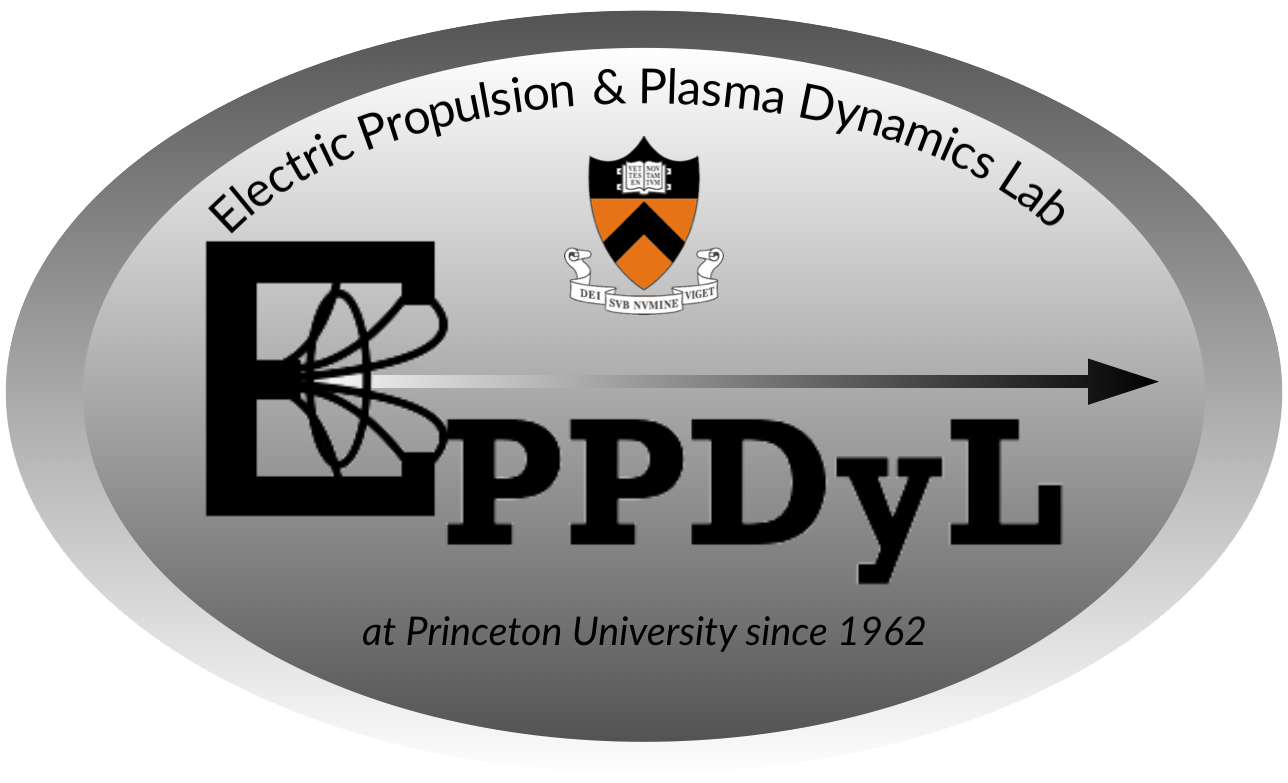MPD Numerical Simulations
Research supported by:
DOE Computational Science Graduate Fellowship,
the Princeton Plasma Physics Laboratory's Program in Plasma Science and Technology, and
NASA-JPL's Advanced Propulsion Group
Introduction
A major obstacle to the use of magnetoplasmadynamic thrusters (MPDT) on spacecrafts, is their low efficiency. For an electric propulsion system to be efficient, the electrical power deposited into the plasma ought to be converted to directed electromagnetic kinetic power and directed electrothermal kinetic power. However, the energy invested is expended among many other sinks, such as undirected electromagnetic and electrothermal kinetic power, electrode losses, plasma thermal losses, internal mode losses, and radiation, that are wasteful for the purpose of propulsion. Given the dearth of high power test facilities, simulations can be valuable aides to research by reducing the need for expensive, and sometimes unviable, experimental parametric studies. The goals of this work are:
- To develop and validate a numerical solver with advanced features specific to the purpose of simulating propulsive plasma flows
- Apply this solver to understand the role of physical processes, that may not be tractable by experimental investigations alone
- Use the results from simulation as an aide/guide to experimental research on gas-fed Magnetoplasmadynamic Thrusters (MPDT) and Lithium Lorentz Force Accelerators (Li-LFA)
Description
Numerical Scheme:
- Conservative form finite volume scheme,
- Generalized non-orthogonal quadrilateral grid,
- Fractional splitting for diffusive fluxes and source terms.
Physical Models:
- Full set of MHD equations, with classical resistivity, electron and ion thermal conduction, Hall effect and gradient drifts,
- Thermal nonequilibrium between electrons and ions,
- Real equation of state,
- Anomalous transport,
- Multi-level equilibrium ionization.
Accomplishments
Computational Methods
For parallel computing we utilize the Beowulf Cluster at the Princeton Plasma Physics Laboratory. Recent versions of the code employ a restructured parallel architecture which, together with a new domain decomposition routine, has led to a dramatic improvement in the parallel efficiency.
Physical Processes
Our simulation correctly predicts many of the salient features of the discharge that were observed in experiments.


Relevant Publications
- Comparison of Simulated Plasma Flowfields to Experimental Measurements for a Gas-Fed Magnetoplasmadynamic Thruster - 39th AIAA/ASME/SAE/ASEE Joint Propulsion Conference (2003)
- Development and Validation of a Parallel MHD Code for the Simulation of Self-Field MPDT Flows - 27th International Electric Propulsion Conference (2001)
- A Flux-Limited Numerical Method for the MHD Equations to Simulate Propulsive Plasma Flows - International Journal for Numerical Methods in Enginnering (2002)
- Simulation of MPD Flows Using a Flux-Limited Numerical Method for the MHD Equations - M.S. Thesis, Princeton University (2000)
- Application of a New Numerical Solver to the Simulation of MPD Flows - 36th AIAA/ASME/SAE/ASEE Joint Propulsion Conference (2000)
- A Flux-Limited Numerical Method for the MHD Equations to Simulate Propulsive Plasma Flows - 31st Plasmadynamics and Lasers Conference (2000)
- An Accurate Characteristics-Splitting Scheme for Numerical Solution of MHD Equations - 26th International Electric Propulsion Conference (1999)
Contact
Former students:- Kamesh Sankaran
- Peter Norgaard
